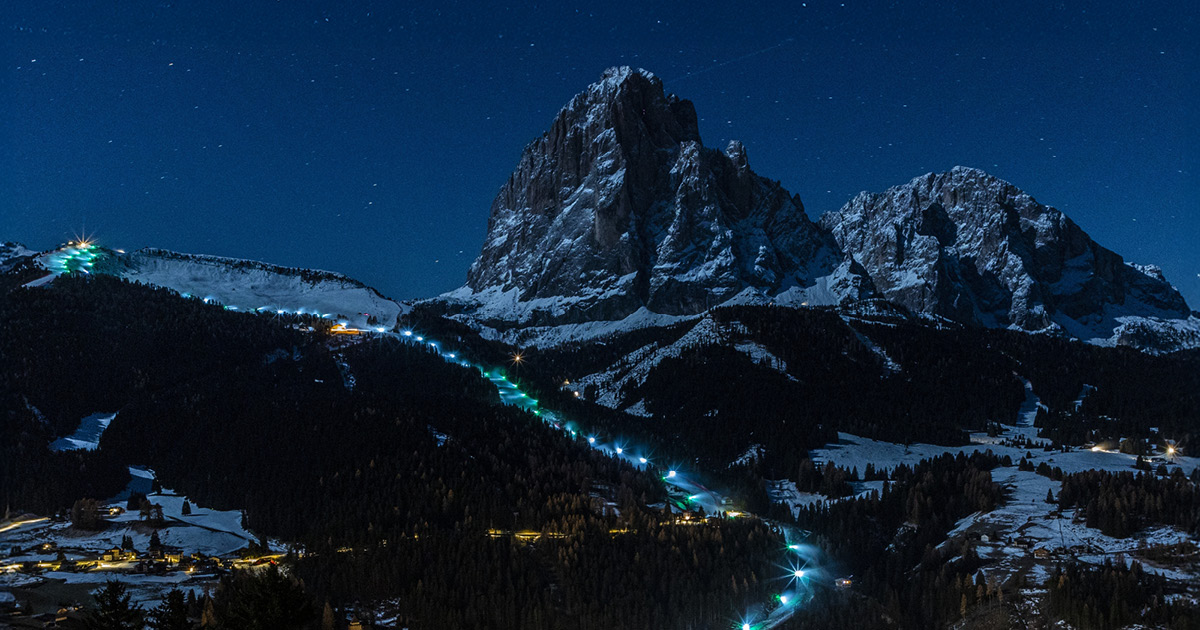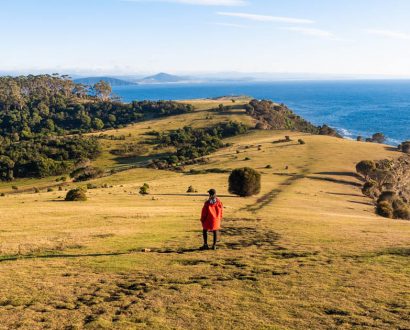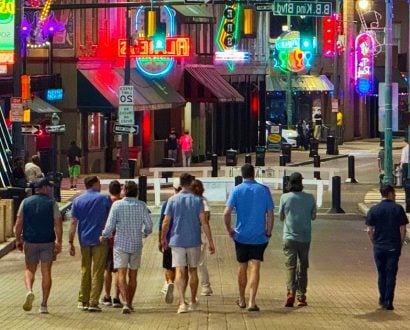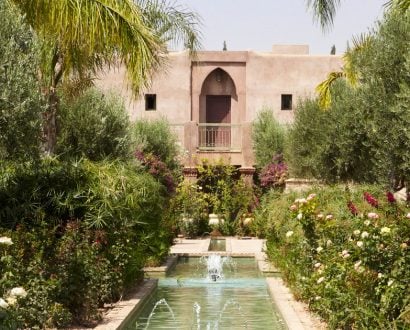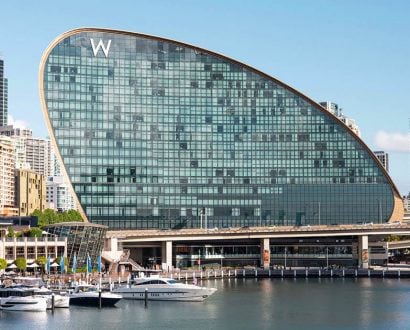In winter, a magical white paradise of soft snow decorates historic villages reminiscent of mythical tales. In summer, green fields sprout with delicate yellow and lilac flowers framed by giant mountains whose tones shift in the light, depending on the mood of the sun – golden oranges, beige to brown, sometimes red bursting into classic pink – the most admirable facet of the Dolomites. It is the endemic soul that reveals colors capable of moving even the most experienced mountaineers.
We are in the extreme northeast of Italy, which covers three states: Veneto, Trentino-Alto Adige and Friuli Venezia Giulia, among small villages, almost on the border with Austria. This is one of the most beautiful mountain regions in Europe, the Dolomites, a UNESCO World Heritage Site. Among dozens of villages, two names are among the most exclusive and coveted: Alta Badia and Val Gardena.
Green fields sprout with delicate yellow and lilac flowers framed by giant mountains whose tones shift in the light, depending on the mood of the sun.
It is easy to understand the pride that is a cultural mark of the ‘Dolomitic’ people when crossing the so-called ‘Passos’ – roads that cut through sections of the nine main groups of iconic mountains in the region. They connect a small village to an even more beautiful one, on a dream-like tour, winding through a magical Italy that is elevated more than 2,000 meters above sea level.
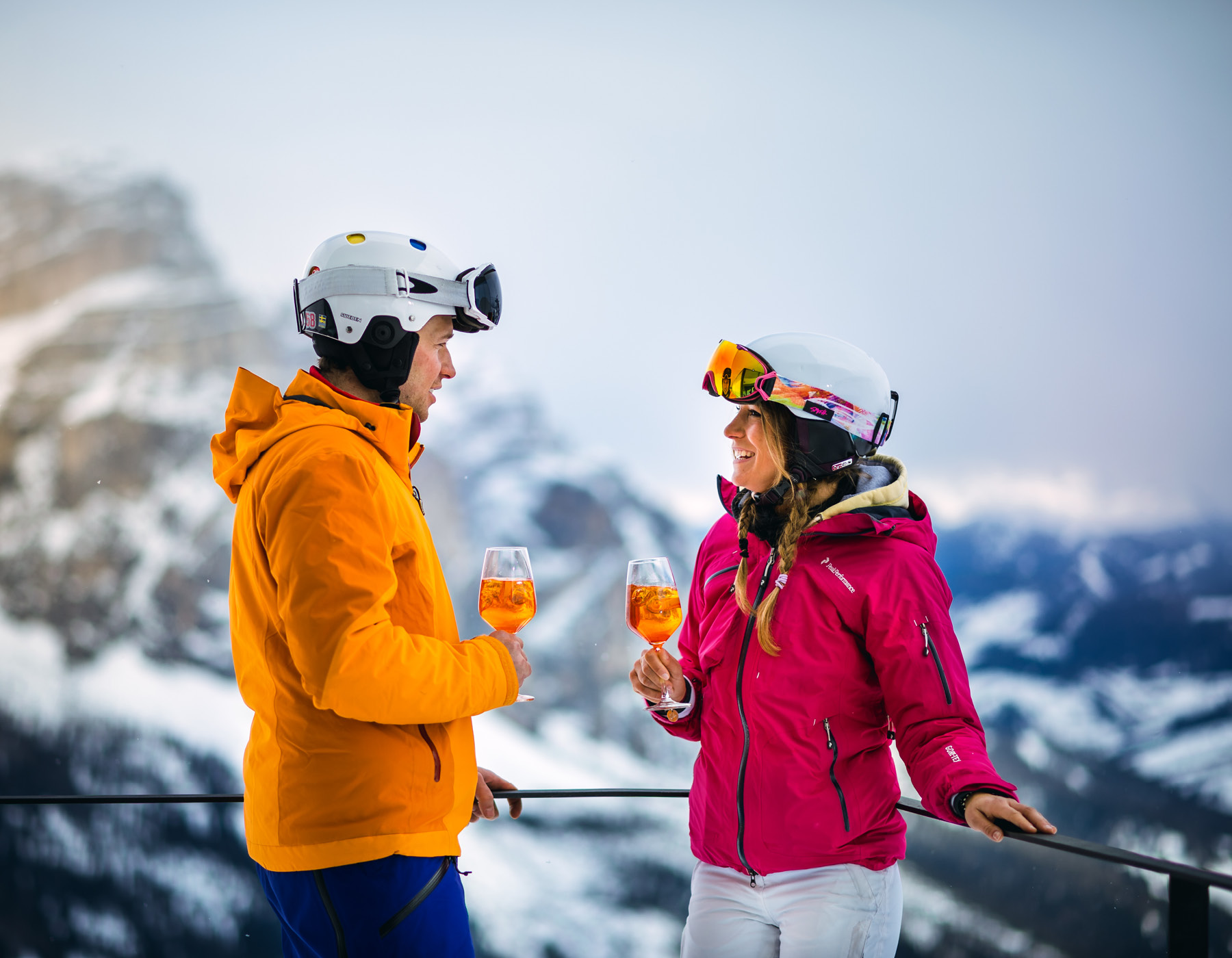
A cultural melting pot
There are many aspects of this region to fall in love with.
Let’s start with the charming mix of expressive Italian culture combined with the authentic Austrian Alpine touch. Look no further than Trentino-Alto Adige, for example, where you can hear Italian, German and Ladino, a local language spoken by only 30,000 inhabitants.
This cultural plurality is present in the wine and food, in the charm of the hotels, in the architecture and in the personality of its people, who express the organization and seriousness of Austrian society, combined with the relaxed and friendly nature of northern Italians.



Paradise for snow lovers
Now let’s talk sport. Added to the package of endearing attributes, is an immense interconnected sea of white for snow sports lovers. The Dolomiti Superski concessionaire offers 1,200 kilometers of slopes with 450 lifts that connect 16 resorts in the region with a single ski pass. This impressive structure facilitates the experience of exploring the mountains even in the so-called ‘off-piste’, with the practice of ‘Ski Safari’.
This is a trip guided by experts, recommended for tourists who have a good command of the art of skiing. This “off-piste” adventure allows you to enjoy the peace of exclusive mountain refuges at the end of an adventurous day exploring almost inhospitable parts of the Dolomites.
“Good feelings are shared within the group, so that everyone feels like they are family – there is an energy that is difficult to describe.”
After hours of activity, you’ll be welcomed by a cozy fireplace, a delicious meal of typical cuisine accompanied by a fine regional wine made by local grapes such as Lagrein and Schiava, and in some locations, the blessing of a warm outdoor Jacuzzi under the Dolomite skies.
“Ski Safari offers an intense connection to nature at its most challenging and breathtaking. Good feelings are shared within the group, so that everyone feels like they are family – there is an energy that is difficult to describe,” explains Agustina Lagos, Founder of Dolomite Mountains, a pioneering operator that customizes these experiences, focusing on the luxury market.
It is a combination of adventure, exploration and pampering, surrounded at all times by one of the most sublime landscapes in Europe.



Alta Badia
Cortina d’Ampezzo is considered the Queen of the Dolomites. This town hosted the 1956 Winter Olympics, and it will once again host the 2026 Winter Olympics in partnership with Milan. But it is its neighbor Alta Badia, separated by the stunning Falzarego Pass, that has attracted the attention of jetsetters and visitors in search of tranquility and exclusive experiences.
Among its many attributes, Alta Badia is famous for being one of the stars of the Sellaronda Circuit, considered one of the most scenic ski tours on the planet. It is about 30 kilometers long, or a four-hour tour, winding through four famous Dolomitic passes: Gardena, Sella, Pordoi and Campolongo.
Alta Badia is famous for being one of the stars of the Sellaronda Circuit, considered one of the most scenic ski tours on the planet.
Its slopes are also coveted by professionals for the quality of the snow and the designs, such as the iconic Gran Risa, which hosts a stage for the Alpine Ski World Cup every year. For history lovers, there is also an eight-hour ski tour of landmarks from the First World War.
The hotel industry also exudes authenticity. There are charming and superb luxury accommodations such as Kolfuschgerhof Mountain (with stunning views, in the small village of Colfosco), as well as names such as Sassongher, Fanes and La Perla. The traditional Rosa Alpina, which opened in 1939 and one of the most sought-after, cane be found in the small village of San Cassiano. The property will reopen this year, after renovation by Aman Resorts, which will now be Rosa Alpina’s managing partner.
In addition to the five-star hotels, there are several options that combine excellence with the intimacy of family management, which is the real identity of the Dolomites accommodations.
“One of the unique things about our six villages is that they provide this exchange of experiences with local people; mountain ladinos who treat tourists like friends,” says Nicole Dorigo, Communications Manager for Alta Badia.org, the official regional promotion agency.
The ‘Enrosadira’ legend
What makes the Dolomites truly special are their dramatic geological formations. Formed from dolomite rock (a mineral that combines calcium and magnesium carbonate), it is quite distinct from the darker metamorphic granite found in most of the Alpine icons, such as the Matterhorn (in the Swiss Alps), for example.
This is where its chameleon-like singularity and the legend of ‘Enrosadira’, which in the Ladino language means ‘turning into pink’, comes from. The phenomenon of the Dolomites changing colours occurs all year round, at sunrise and sunset, but is more intense during the summer, after snow has fallen from the mountain, revealing rocks that glow from orange to pink.
Returning to the legend, the locals say that King Laurin, leader of the dwarves, fell in love with the daughter of the King of Adige during a party. Dazzled, he decided to cover all the fields around the mountains with pink flowers to win over his beloved.
But his romantic gesture was rejected by his future father-in-law and after some conflicts, Laurin ordered all the gardens to be petrified, during the day and night. But the resentful king forgot the moments of transition: when the sun rises and when it says goodbye. In these few minutes the curse is undone and the Dolomites once again reflect the superb pink of the flowers.
The Alpine hut Marmolada is one of those accommodations where the Costamoling family (mother and children) welcome guests in an intimate way. The boutique hotel was recently renovated, with highlights including the charming spa, with Finnish sauna, Turkish bath and bio-sauna, caldarium, outdoor whirlpool and heated pool.
The cuisine is also impeccable, complemented by the award-winning Toccami and Cocktail Bar, a pioneer in the region, receiving guests for apres ski, with a well-structured wine list, created by the owner and sommelier, Iwan Costamoling. Some suites have views of the impressive Sassongher mountain, which seems to bless the small village of Corvara, the heart of Alta Badia.
Just 40 minutes separates the region from its neighbor, Val Gardena. Follow the path that passes through the Colfosco peak and pause at the homely Mesoles restaurant, where a divine mushroom risotto awaits, then stop, and behold: the majestic Sella Pass is before you. This short route between the walls of the Dolomites is wonderful. It is in these mountains that we can see the enchantment that has transformed the region into a World Heritage Site.



The terrific trio of Val Gardena
The first village at the end of the Sella Pass is Selva di Gardena, the highest, with a very sporty profile, with the giant Sassolungo as its iconic guardian mountain. Welcoming hosts are common in the region, where excellently family-run accommodations await. Meet the couple Bibiana and Maurizio from Hotel Tirol, who welcome their guests as if they were truly in their home. They exude genuine friendliness and hospitality, transforming your stay into a lifelong memory.
The next village is the serene Santa Cristina, with only 2,000 inhabitants and a very friendly atmosphere. One of its highlights is Monte Pana, where the Cendevaves ‘ski-in-and-out’ hotel has just been reopened, in a fabulous location with panoramic views of the region’s main peaks, such as Sasso Piatto, Stevia, Seceda, Sella, Sass Rigais and the sovereign Sassolungo, which can be admired like a Dolomite God, from the property’s Skypool and outdoor Jacuzzi.
The renovation project, which now features 28 brand-new contemporary-style suites, was designed by the couple Birgit and Christian Stuffer, who, together with their three children, created a property that takes advantage of its 360-degree panoramic views of the Santa Cristina valleys and the Alpi di Siusi, harmonized with what they call ‘Alpine Silence’, in which the only noise of the night comes from the icy wind or the gentle sound of falling snow.
Welcoming hosts are common in the region, where excellently family-run accommodations await.
From the beautiful breakfast area, you can also see the iconic Saslong Slope, the venue for two annual stages of the Ski World Cup: the Super G and the Downhill, which has been held for over half a century, with epic events in one of the most impressive competitions in the world. Athletes reach incredible speeds of 120 kilometers per hour, with jumps of more than 80 meters.
Back in the villages, Ortisei completes the Gardena trio, as the most famous town, full of century-old buildings and woodcraft workshops, especially religious art, famous throughout Italy. The historic center is the most charming in the Dolomites, with traditional hotels that share space with regional restaurants and sophisticated shops, as well as the unmissable Renaissance and Baroque chapel of Saint Ulrich. The village is even more beautiful ‘dressed’ at Christmas, with rustic kiosks offering souvenirs and glasses of mulled wine to combat the chilly temperatures of winter nights.
Ortisei has a vein that inspires art. The use of molded wood, from which pieces emerge that exalt the faith or culture of a unique people and a singular language, is a reflection of what artisans see every day: walls of Dolomite giants whose shapes, colors and moods awaken creativity and the desire to learn from nature. It is difficult to think of a more inspiring ‘home office studio’ than these Italian mountains.

